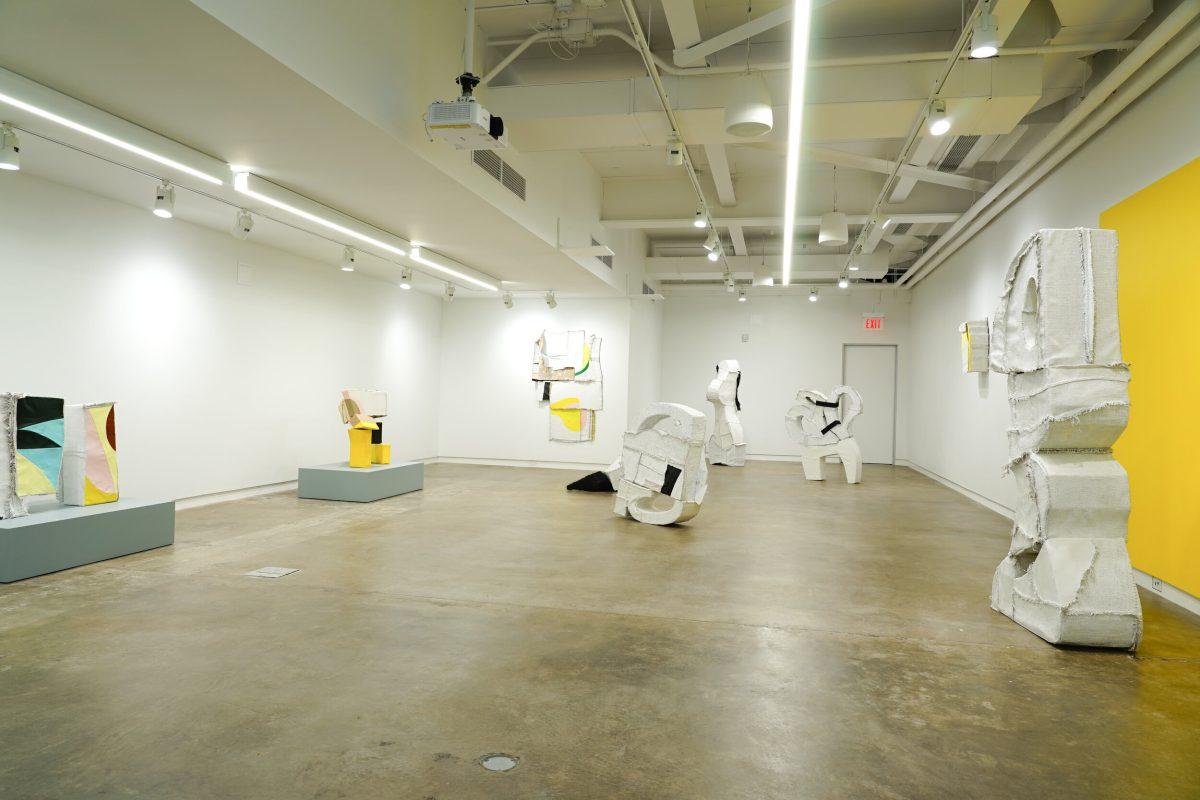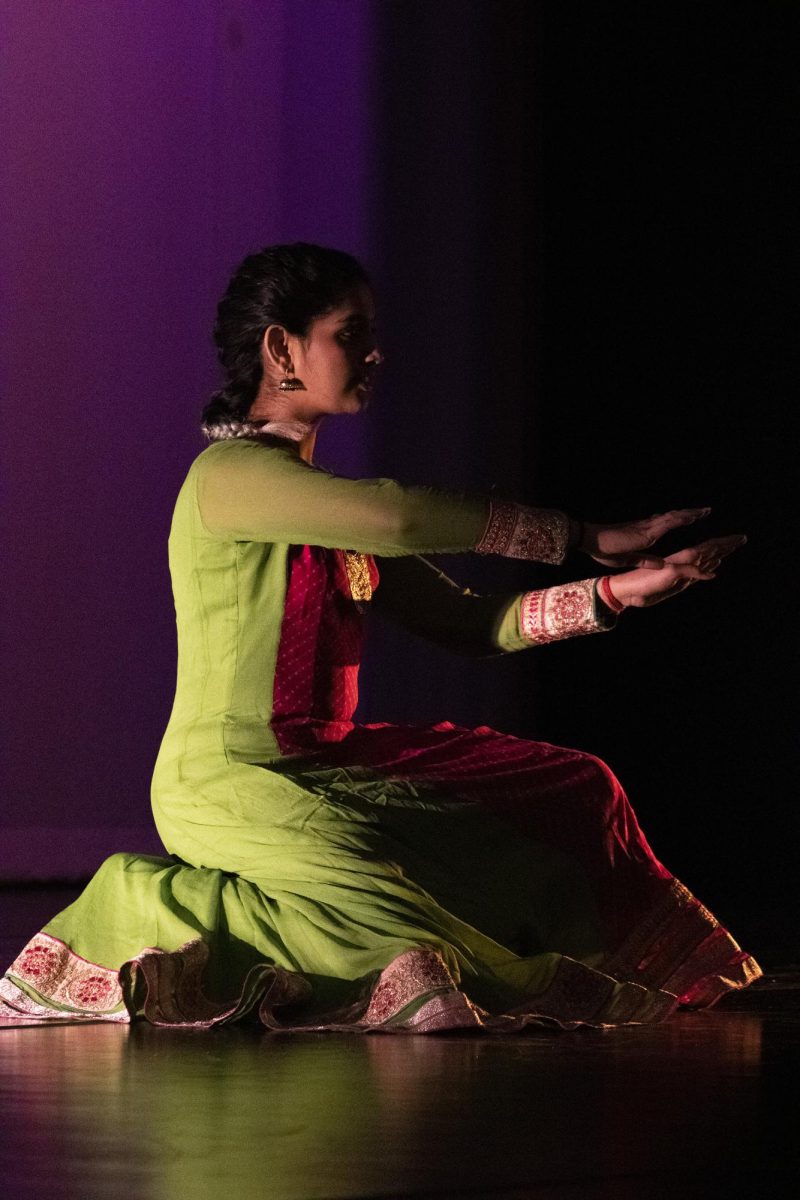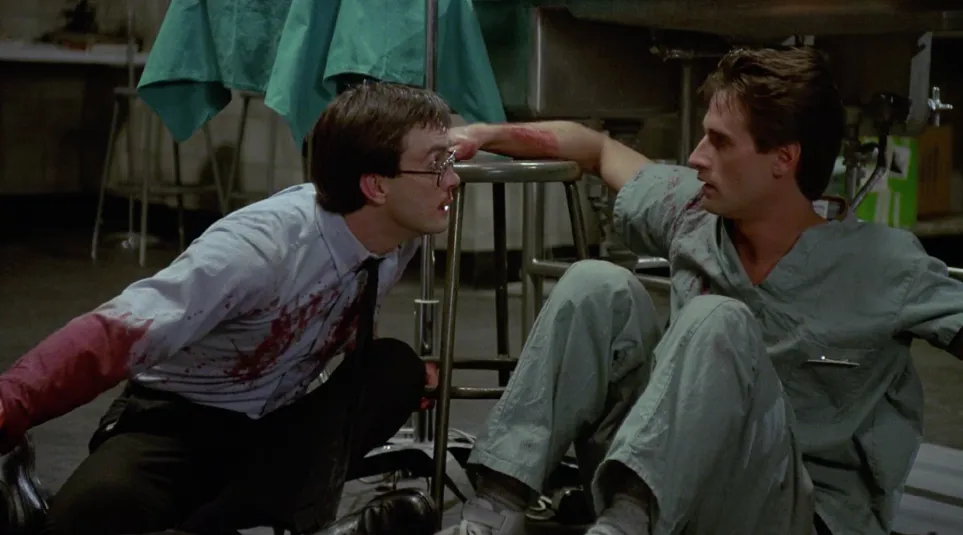Exhibit introduces Knox community to “Shapes of a Premonition”
Behind large glass doors, tucked in the main hallway of the Center for Fine Arts, is the Borzello Gallery. The glow now emanating off the partially yellow walls were purposefully add- ed for this term’s gallery.
Restrictions from the pandemic have caused the gallery to do only one exhibit for fall term. That exhibition, “Shapes of a Premonition,” featured pieces from Monica Rezman, a portrait painter-turned-sculptor.
Before the pieces can be brought to Knox, there is a process that art faculty go through to decide which artist will be featured. When Knox makes it known that the gallery is open for shows, artists write proposals that the faculty look over together before deciding on the artist.
Associate Professor and Chair of Art Mark Holmes knew that Rezman was a fairly well-known Chicago artist, and after receiving a recommendation from a friend he decided to ask the faculty to consider her work for this term’s show.
“Each exhibit is assigned a manager. That is one of the faculty that helps organize and oversee it and does all the communication with the artist, and I am the organizer of this show. But the gallery is sort of a collective effort,” Holmes said.
The manager usually assists in curating the show. Holmes and Rezman spent two days together placing the sculptures in a way that was fitting for both the space and the pieces.
An important part of the show is highlighting the use of materials. The sculptures are all brown, white, and black, so yellow walls were used to highlight certain pieces. Included in the gallery is work from her time in Mexico, and some more modern pieces.
The majority of her sculptures are cardboard frames covered with hand stitched burlap which was then painted white and black. These sculptures almost look like a two dimensional painting directly translated into the third dimension, with two flat sides.
Even though Rezman does not use color in her sculptures, she was originally trained in portrait painting.
“One of the most unique things about her background as an artist is that she actually studied sort of the very classical techniques of portrait painting, we would call sort of ‘old master’ techniques of building up glazes and tones and painting and stuff,” Holmes said.
When Rezman moved from charcoal and painting to sculptures, she made delicate paper sculptures. After moving to Mexico, however, she decided to change the materials she was using, wanting to branch out of delicate paper sculptures and because of the way she was living.
“When you’re living in another country, art supplies are so limited. I just couldn’t find what I wanted, but there was an air conditioner store next door to my house, and I went there and they gave me all these cardboard boxes,” Rezman said.
“I went to the market, and I found all these burlap sacks. I was just going to town. Cutting, gluing, stitching, and I think that’s really what took it to the next level. You’re in a place where there’s really nothing else to do but work.”
The time Rezman spent abroad had a lot of influence on her work. In addition to Mexico, she spent time in India and Europe. The stitching in her sculptures come from her experience in textiles.
“There’s bits and pieces of things from all of those experiences. She worked as she had her own company as a textile and clothing designer. All of those experiences end up really playing a role in the work,” Holmes said.
Holmes asked his colleagues to encourage their students to attend the gallery, as well as encouraging his own. Sophomore Sydney Gillette attended the gallery during her free time and during class.
“I thought it was really interesting that [Rezman] just used what she already had, and I liked the way she painted the materials. It really made you want to touch the work, which I think is an important thing for an artist to accomplish, because it exposes how people can’t really resist sensory things. She turned these objects into non-precious distorted items. I liked how intimate it was too. It was laid out in a way that lets the viewer feel comfortable,” Gillette said.
Although the time to visit the Rezman exhibit is over, the gallery will have a new exhibit during the spring term. Holmes believes that, despite how important it is to have art on campus, students may feel intimidated when they consider going to the gallery.
“It’s a challenge to really get people out. We send out emails to the faculty distribution list and to all of our classes. But there are days, frankly, where just a couple people walk into the gallery during a day,” Holmes said. “I think some people might feel a certain amount of trepidation or anxiety about going into a gallery.”









